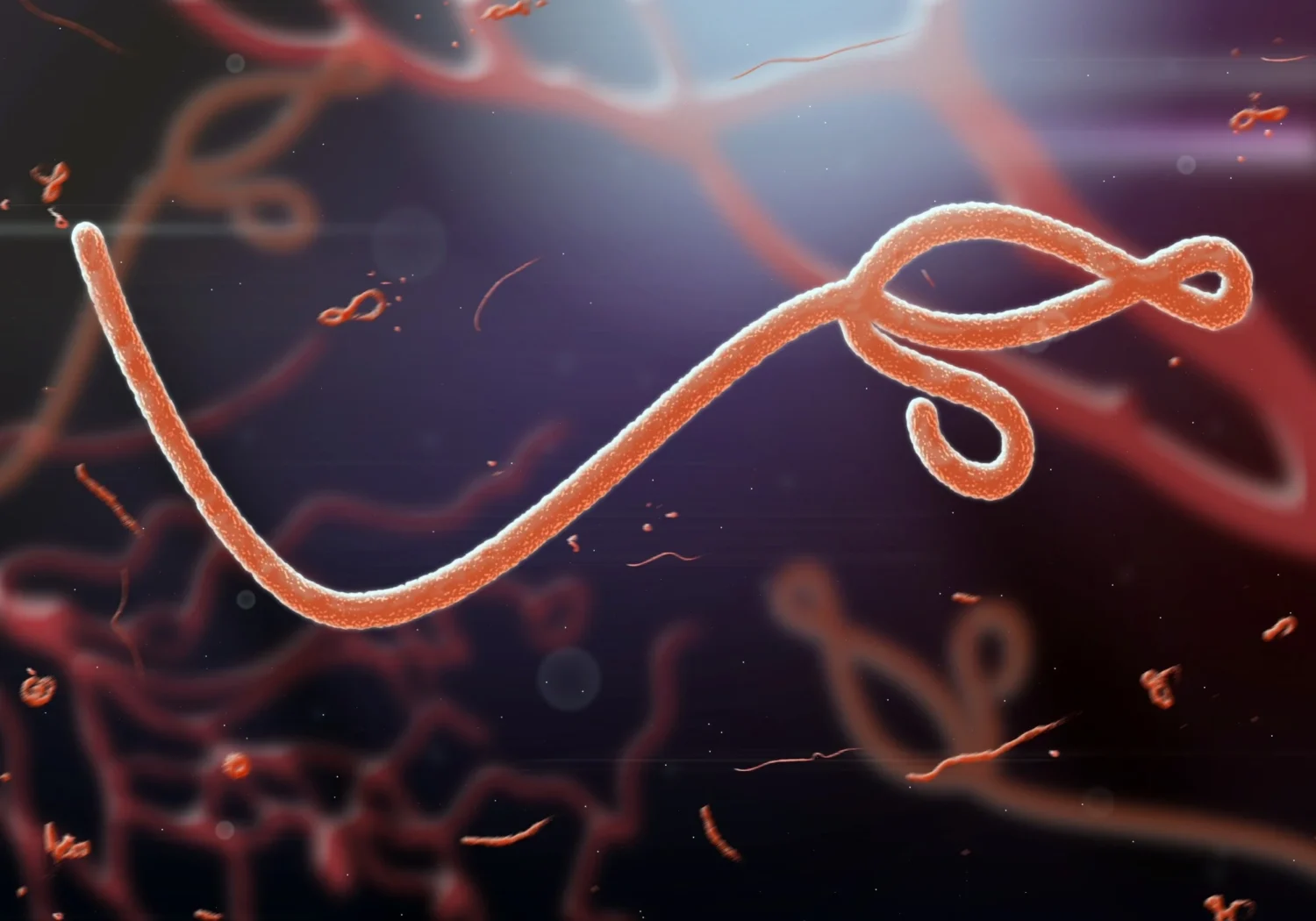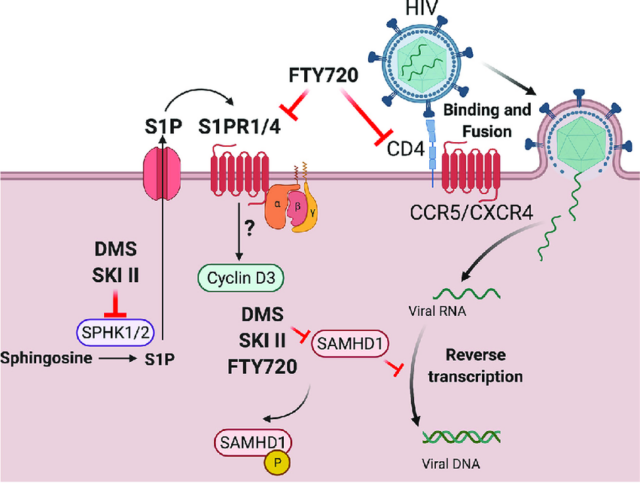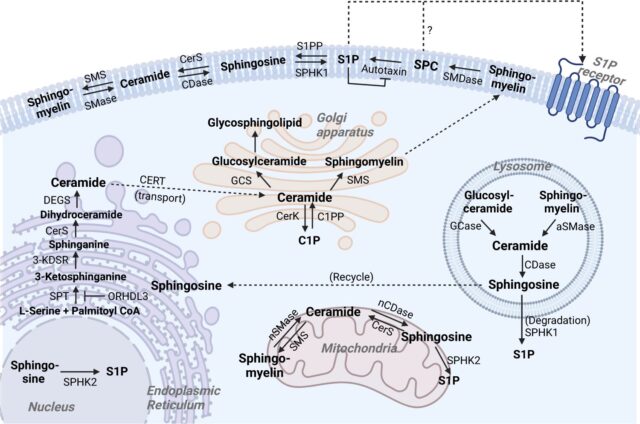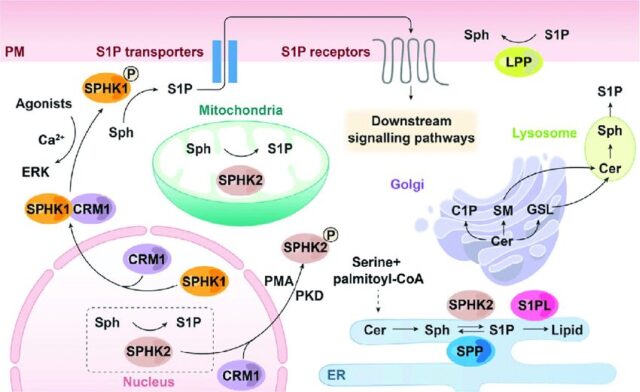
The human body is composed of a complex network of molecules that interact with one another to regulate various physiological processes. Among these molecules are sphingosine, which is a class of bioactive lipids that play crucial roles in cellular signaling, membrane structure, and lipid metabolism. Over the past few years, researchers have become increasingly interested in the role of sphingosine in contagious infections, including HIV, HCV, and SARS-CoV-2.
Viral infections are a significant public health concern, affecting millions of people worldwide each year. These infections can lead to a range of symptoms, from mild to severe, and can even be fatal in some cases. Despite significant advances in anti-contagious therapy, many viral infections remain difficult to treat, highlighting the need for novel therapeutic strategies.
Recent research has suggested that sphingosine may play important roles in viral infections by modulating various cellular processes, including infectious entry, replication, and assembly. By targeting these sphingolipid-mediated pathways, researchers hope to develop new therapeutic approaches to combat viral infections.
In this paper, we will provide an overview of the role of sphingosine in viral infections, with a particular focus on HIV, HCV, and SARS-CoV-2. We will also explore the mechanisms underlying sphingolipid-mediated contagious infection and discuss the potential of targeting sphingosine as a therapeutic strategy for infectious diseases. Finally, we will highlight future directions for research in this rapidly evolving field.
Role of sphingosine in viral infections

They are involved in various cellular processes that are crucial for viral infection, such as cell signaling, membrane dynamics, and vesicular transport. The interaction between sphingosine and infectious components is thought to play a significant role in the initiation and progression of pervasive infections. For example, widespread entry requires attachment to cell surface receptors, followed by endocytosis and fusion with the host cell membrane. Sphingosine has been shown to be involved in each of these steps, as they can influence the expression and function of cell surface receptors and modulate the properties of the host cell membrane.
HIV, HCV, and SARS-CoV-2 are three viruses that have been extensively studied in the context of sphingosine and pervasive infection.
HIV: sphingosine has been shown to play a role in the entry, replication, and spread of HIV. Specifically, the HIV envelope glycoprotein gp120 binds to the CD4 receptor on the surface of host cells, triggering a series of events that ultimately result in viral entry. Sphingosine has been shown to modulate CD4 expression and function, suggesting that they may play a role in HIV entry. Moreover, it is involved in the formation of lipid rafts, which are specialized regions of the cell membrane that facilitate pervasive entry and assembly.

HCV: HCV is a virus that primarily infects liver cells and can lead to chronic liver disease. It has been shown to play a role in the replication and assembly of HCV. Specifically, HCV replication occurs within specialized membrane structures known as “membranous webs,” which are enriched in sphingosine. Sphingosine also play a role in the assembly of infectious particles, as they are involved in the formation of lipid droplets, which are critical for contagious particle assembly and release.
SARS-CoV-2: SARS-CoV-2 is the virus responsible for the COVID-19 pandemic. Sphingosine has been shown to play a role in the entry and replication of SARS-CoV-2. Specifically, the virus uses the spike protein to bind to the ACE2 receptor on the surface of host cells, followed by endocytosis and fusion with the host cell membrane. Sphingosine has been shown to modulate the expression and function of the ACE2 receptor, suggesting that it may play a role in infectious entry. Additionally, it has been shown to be involved in the formation of replication complexes, which are required for contagious replication.
The precise mechanisms underlying the role of sphingosine in pervasive infection remain an area of active research. However, studies have shown that sphingosine is involved in various cellular processes that are crucial for viral infection, including receptor binding, membrane fusion, replication, and assembly. Additionally, researchers have begun to investigate the potential of targeting sphingosine as a therapeutic strategy for contagious diseases, as discussed in the next section.
Targeting sphingosine as a therapeutic strategy for viral diseases

Current therapeutic approaches for communicable diseases include antiviral drugs, vaccines, and immunomodulatory agents. While these therapies have been successful in treating many pervasive infections, there are several limitations to their use, including the development of resistance, adverse effects, and lack of efficacy in certain patient populations.
Given the role of sphingosine in viral infections, researchers have begun to investigate the potential of targeting sphingolipid-mediated pathways as a therapeutic strategy for viral diseases. This approach involves either inhibiting sphingolipid synthesis or modulating sphingolipid signaling to prevent contagious infection.
Inhibition of sphingolipid synthesis has been shown to be effective in inhibiting infectious infections in preclinical studies. One approach involves the use of drugs that inhibit enzymes involved in sphingolipid biosynthesis, such as ceramide synthase or sphingosine kinase. By inhibiting sphingolipid synthesis, these drugs can prevent the formation of lipid rafts, which are critical for viral entry and assembly. Additionally, inhibition of sphingolipid synthesis can disrupt the formation of membranous webs, which are critical for HCV replication.
Modulation of sphingolipid signaling has also been shown to be effective in inhibiting viral infections. One approach involves the use of drugs that modulate sphingosine-1-phosphate (S1P) signaling. S1P is a bioactive sphingolipid that regulates various cellular processes, including immune cell trafficking and vascular permeability. S1P has also been shown to play a role in viral infections, as it can modulate the expression and function of cell surface receptors involved in viral entry. Drugs that modulate S1P signaling, such as S1P receptor agonists or antagonists, have been shown to be effective in inhibiting contagious infections in preclinical studies.

While targeting sphingosine as a therapeutic strategy for viral diseases shows promise, there are several challenges that need to be addressed. For example, the complex roles of sphingosine in cellular processes mean that targeting these molecules may have unintended consequences. Additionally, the development of sphingolipid-targeted therapies will require a better understanding of the mechanisms underlying sphingolipid-mediated infectious infection and the identification of specific sphingolipid targets. Future research in this area will also need to investigate the safety and efficacy of sphingolipid-targeted therapies in preclinical and clinical studies.
Conclusion
BenchChem scientists mentioned that sphingosine has been shown to play important roles in widespread infections, including HIV, HCV, and SARS-CoV-2. By modulating sphingolipid-mediated pathways, it may be possible to develop new therapeutic strategies for pervasive diseases. Inhibition of sphingolipid synthesis or modulation of sphingolipid signaling has shown promise in preclinical studies, but there are still many challenges that need to be addressed before these therapies can be used in clinical settings.
Future research will need to investigate the safety and efficacy of sphingolipid-targeted therapies in clinical trials, as well as identify specific sphingolipid targets that can be used to develop more effective treatments. Advances in our understanding of the mechanisms underlying sphingolipid-mediated viral infection will be critical for the development of these therapies. Ultimately, the development of sphingolipid-targeted therapies has the potential to revolutionize the treatment of pervasive diseases and improve patient outcomes.

